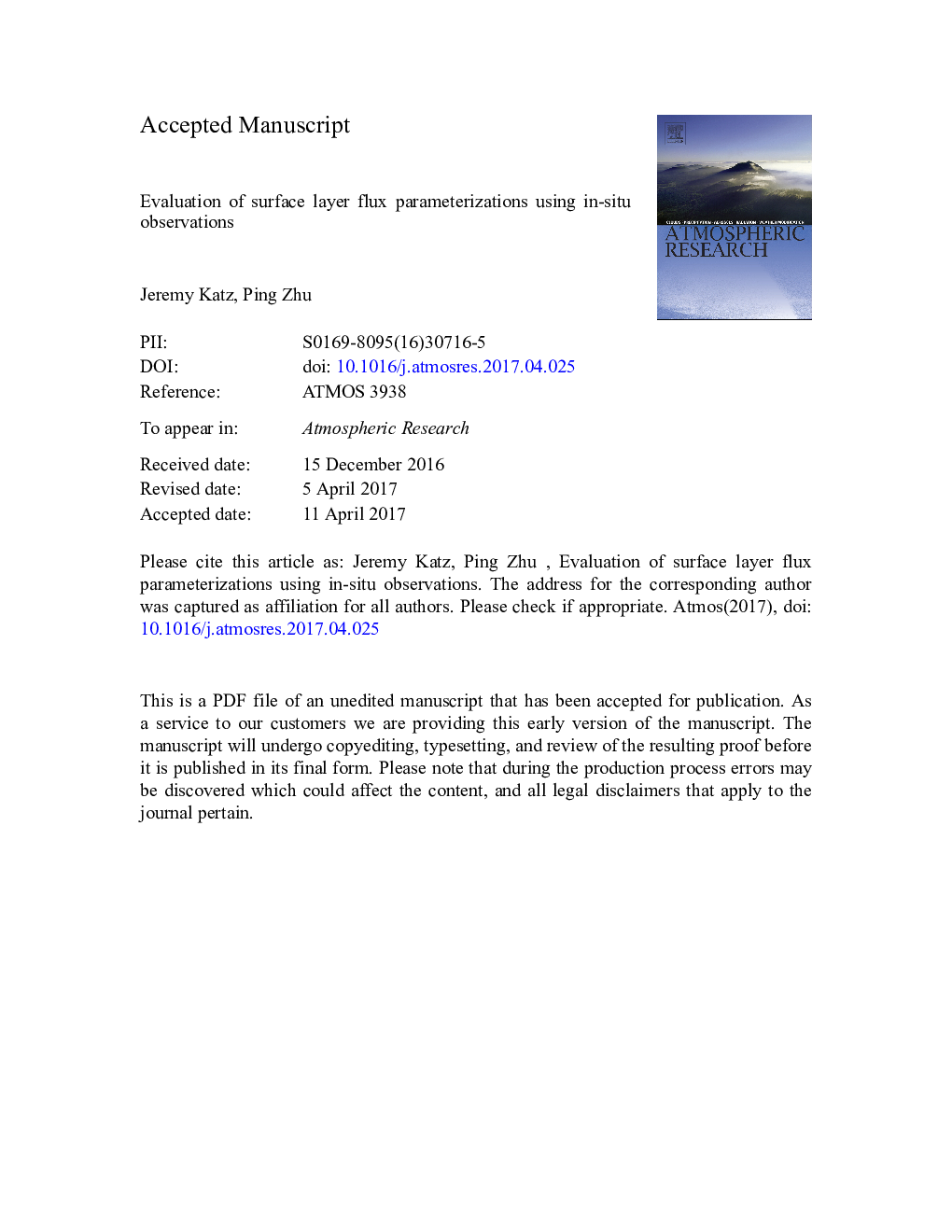| Article ID | Journal | Published Year | Pages | File Type |
|---|---|---|---|---|
| 5753618 | Atmospheric Research | 2017 | 51 Pages |
Abstract
Appropriate calculation of surface turbulent fluxes between the atmosphere and the underlying ocean/land surface is one of the major challenges in geosciences. In practice, the surface turbulent fluxes are estimated from the mean surface meteorological variables based on the bulk transfer model combined with the Monnin-Obukhov Similarity (MOS) theory. Few studies have been done to examine the extent to which such a flux parameterization can be applied to different weather and surface conditions. A novel validation method is developed in this study to evaluate the surface flux parameterization using in-situ observations collected at a station off the coast of Gulf of Mexico. The main findings are: (a) the theoretical prediction that uses MOS theory does not match well with those directly computed from the observations. (b) The largest spread in exchange coefficients is shown in strong stable conditions with calm winds. (c) Large turbulent eddies, which depend strongly on the mean flow pattern and surface conditions, tend to break the constant flux assumption in the surface layer.
Related Topics
Physical Sciences and Engineering
Earth and Planetary Sciences
Atmospheric Science
Authors
Jeremy Katz, Ping Zhu,
